Decoding and Decompressing PM2’s Background Images
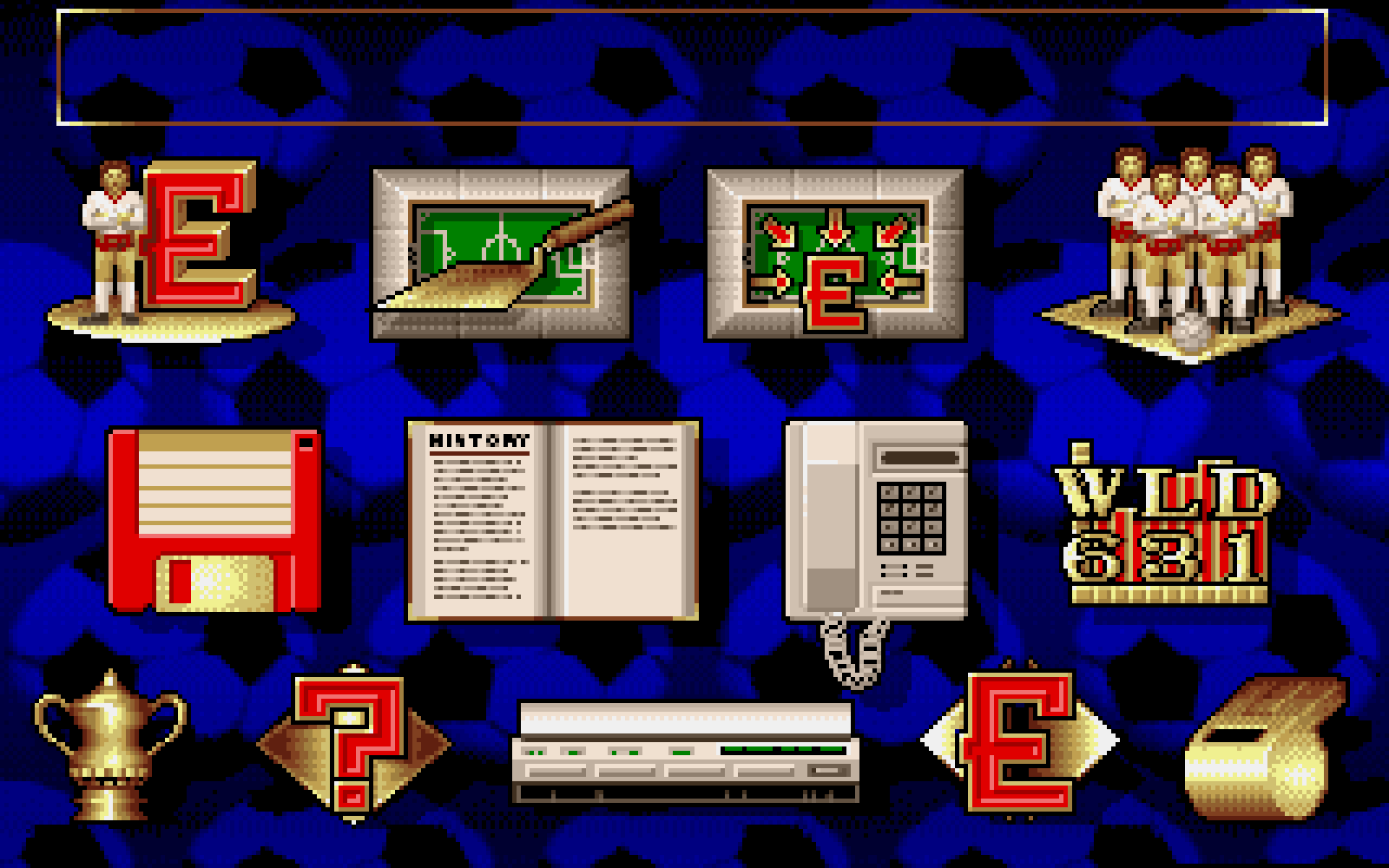
So! This is it. After slacking off for a while, I think I’m ready to reverse engineer the Premier Manager 2 (PM2) image compression format for the background (.gnd) files. A year or so ago, I worked on the .vga files, so now it’s time to try decoding the .gnd files. I haven’t touched this in a while, so I’m not sure how far I got last time. Without further ado, let’s start!
Judging by the filenames, the .gnd files are background images. The easiest way to begin is to find a way to reliably display a specific image in the game, inspect the file for patterns, and then modify it byte by byte to see the effects.
I’m doing this on my Mac, but you can use whatever OS you prefer. I’m using DosBox-X as my DOS emulator.
First Steps
First, here are all the .gnd files sorted by size so I can choose the smallest one to start with:
ls -lSh *.gnd
-rw-r--r--@ 1 nunoalves staff 34K Dec 24 1996 credits.gnd
-rw-r--r--@ 1 nunoalves staff 30K Dec 24 1996 seas2.gnd
-rw-r--r--@ 1 nunoalves staff 26K Dec 24 1996 seas1.gnd
-rw-r--r--@ 1 nunoalves staff 24K Dec 24 1996 titlepic.gnd
-rw-r--r--@ 1 nunoalves staff 20K Dec 24 1996 seas3.gnd
-rw-r--r--@ 1 nunoalves staff 18K Dec 24 1996 mainoff2.gnd
-rw-r--r--@ 1 nunoalves staff 18K Dec 24 1996 validpi2.gnd
-rw-r--r--@ 1 nunoalves staff 17K Dec 24 1996 result.gnd
-rw-r--r--@ 1 nunoalves staff 16K Dec 24 1996 diskpic2.gnd
-rw-r--r--@ 1 nunoalves staff 12K Dec 24 1996 sec2.gnd
-rw-r--r--@ 1 nunoalves staff 12K Dec 24 1996 sponsor1.gnd
-rw-r--r--@ 1 nunoalves staff 12K Dec 24 1996 sound.gnd
-rw-r--r--@ 1 nunoalves staff 9.9K Dec 24 1996 report.gnd
-rw-r--r--@ 1 nunoalves staff 9.6K Dec 24 1996 options2.gnd
-rw-r--r--@ 1 nunoalves staff 9.3K Dec 24 1996 contract.gnd
-rw-r--r--@ 1 nunoalves staff 6.5K Dec 24 1996 gndpane2.gnd
-rw-r--r--@ 1 nunoalves staff 6.0K Dec 24 1996 gndside2.gnd
-rw-r--r--@ 1 nunoalves staff 6.0K Dec 24 1996 gndgoal2.gnd
-rw-r--r--@ 1 nunoalves staff 5.4K Dec 24 1996 padpic2.gnd
-rw-r--r--@ 1 nunoalves staff 4.6K Dec 24 1996 tactic.gnd
-rw-r--r--@ 1 nunoalves staff 4.2K Dec 24 1996 matchpic.gnd
-rw-r--r--@ 1 nunoalves staff 2.7K Dec 24 1996 namespic.gnd
-rw-r--r--@ 1 nunoalves staff 2.4K Dec 24 1996 anim.gnd
-rw-r--r--@ 1 nunoalves staff 1.9K Dec 24 1996 monitor.gnd
-rw-r--r--@ 1 nunoalves staff 1.6K Dec 24 1996 gndcove2.gnd
-rw-r--r--@ 1 nunoalves staff 1.3K Dec 24 1996 fax.gnd
-rw-r--r--@ 1 nunoalves staff 1.3K Dec 24 1996 sponsor2.gnd
So, sponsor2.gnd is the smallest, so it should be the easiest to understand and decode. To find out where it appears in-game, back it up and replace its contents with another file (for example, sec2.gnd):
mv sponsor2.gnd sponsor2.bak
cp sec2.gnd sponsor2.gnd
Weirdly, PM2 crashes whenever the sponsors window is clicked—suggesting either a format or size mismatch. I suspect a size mismatch. In any case, that crash was a godsend, because now I know sponsor2.gnd is rendered behind the sponsors icon on the main screen: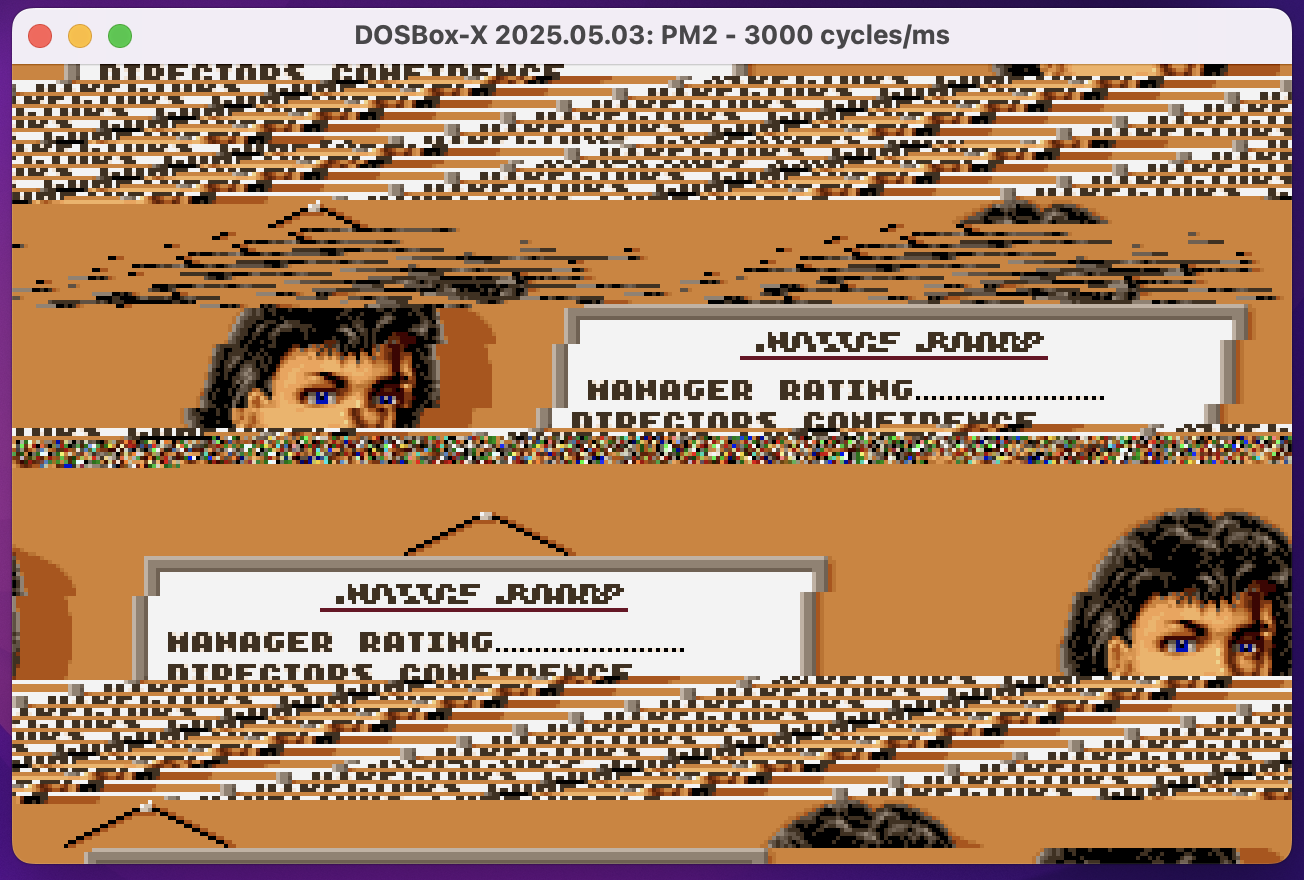
Copying sec2.gnd to sponsor2.gnd crashes PM2
As a baseline, I restore the original sponsor2.gnd and check how the sponsors menu looks:
Original sponsor2.gnd in-game
It turns out sponsor2.gnd is the cloud background. Next, let’s replace it with another file—say diskpic2.gnd:
diskpic2.gnd used as sponsor2.gnd; background changed successfully
It seems some background files crash PM2 when copied into sponsor2.gnd. Let’s see which ones crash the game and which don’t:
Crashes:
credits.gnd,seas2.gnd,seas1.gnd,titlepic.gnd,seas3.gnd,validpi2.gnd,sec2.gnd,sponsor1.gnd,sound.gnd,report.gnd,options2.gnd,contract.gnd,gndpane2.gnd,gndside2.gnd,gndgoal2.gnd,tactic.gnd,namespic.gndOK:
mainoff2.gnd,result.gnd,diskpic2.gnd,phonpic2.gnd,padpic2.gnd,matchpic.gnd,anim.gnd,monitor.gnd,gndcove2.gnd,fax.gnd
It looks like certain .gnd files have display sizes! In any case, since sec2.gnd appears in the secretary window, let’s apply the same trick and see if the rest of the files can be decoded when their contents are copied into sec2.gnd.
- OK:
seas2.gnd,seas1.gnd,seas3.gnd,validpi2.gnd,sponsor1.gnd,sound.gnd,report.gnd,options2.gnd,gndpane2.gnd,gndside2.gnd,gndgoal2.gnd,tactic.gnd,namespic.gnd - OK (…But Odd Colors):
credits.gnd,titlepic.gnd,contract.gnd
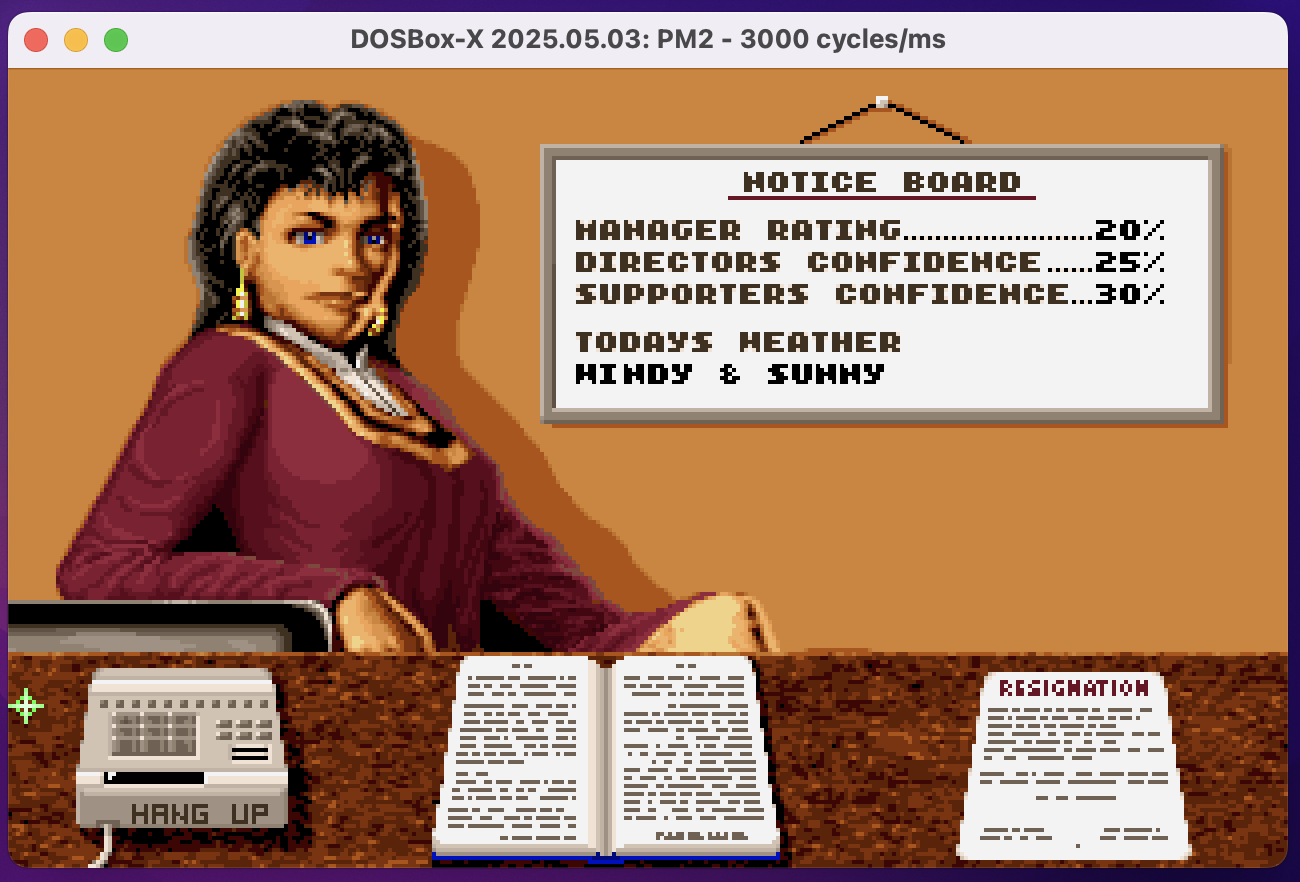
Baseline sec2.gnd
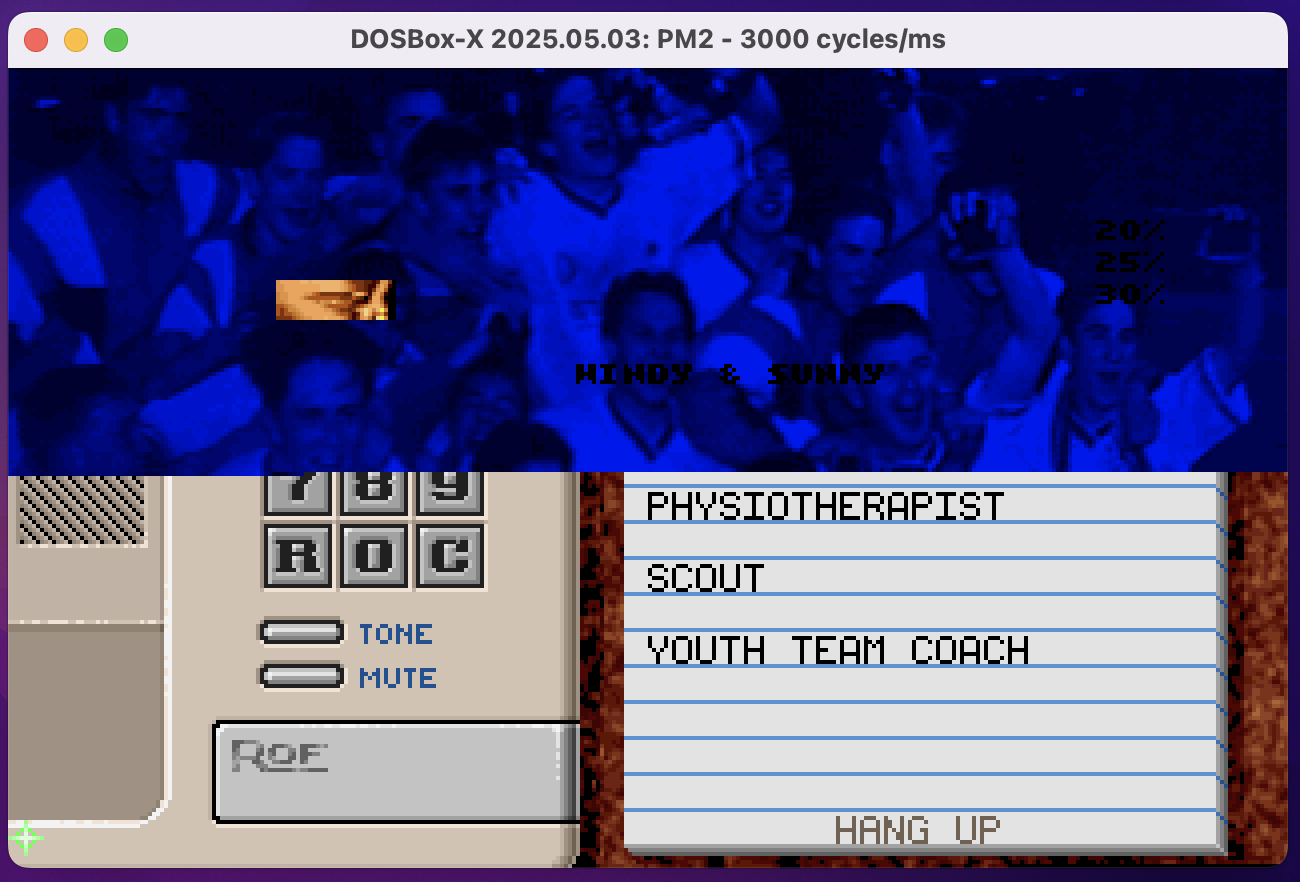
seas2.gnd used as sec2.gnd; background changed successfully
I strongly suspect the odd colors are caused by decoding with a different palette. This is promising, because there are two palette files in the game assets. All good!
Entropy Analysis
Using a hex editor, I took a quick peek at the .gnd files and, unlike the .vga files, they appear to be compressed. To confirm this, I measured the files’ entropy with a tool like binwalk. Binwalk calculates Shannon entropy over fixed-size windows (1024 bytes each), giving a snapshot of how “random” each region is. An entropy of 0 bits/byte means all bytes are identical, whereas 8 bits/byte indicates perfectly random data. Higher entropy corresponds to higher information content. I like to think of it as how surprised you are by the next byte: if you see many consecutive identical bytes, each repeat is unsurprising—and thus low entropy.
The binwalk algorithm is straightforward:
- Read 1024 bytes (offset 0–1023).
- Count the occurrences of each byte (build a 256-element histogram).
- Divide each byte count by 1024 to calculate its frequency.
- Compute the entropy for this window.
- Move on to the next 1024 bytes (1024–2047) and repeat.
Running the following commands will log the raw entropy data and generate entropy graphs for each file type.
binwalk sponsors.vga --entropy --log sponsors2.txt
binwalk sec2.gnd --entropy --log sec2.txt
In the images below, the Y-axis (0 – 8 bits/byte) shows the entropy for each 1024-byte block. sponsors.vga never exceeds about 3.5 bits/byte, whereas sec2.gnd sits around 6.3 bits/byte—implying a high degree of randomness and suggesting a pretty good compression mechanism.
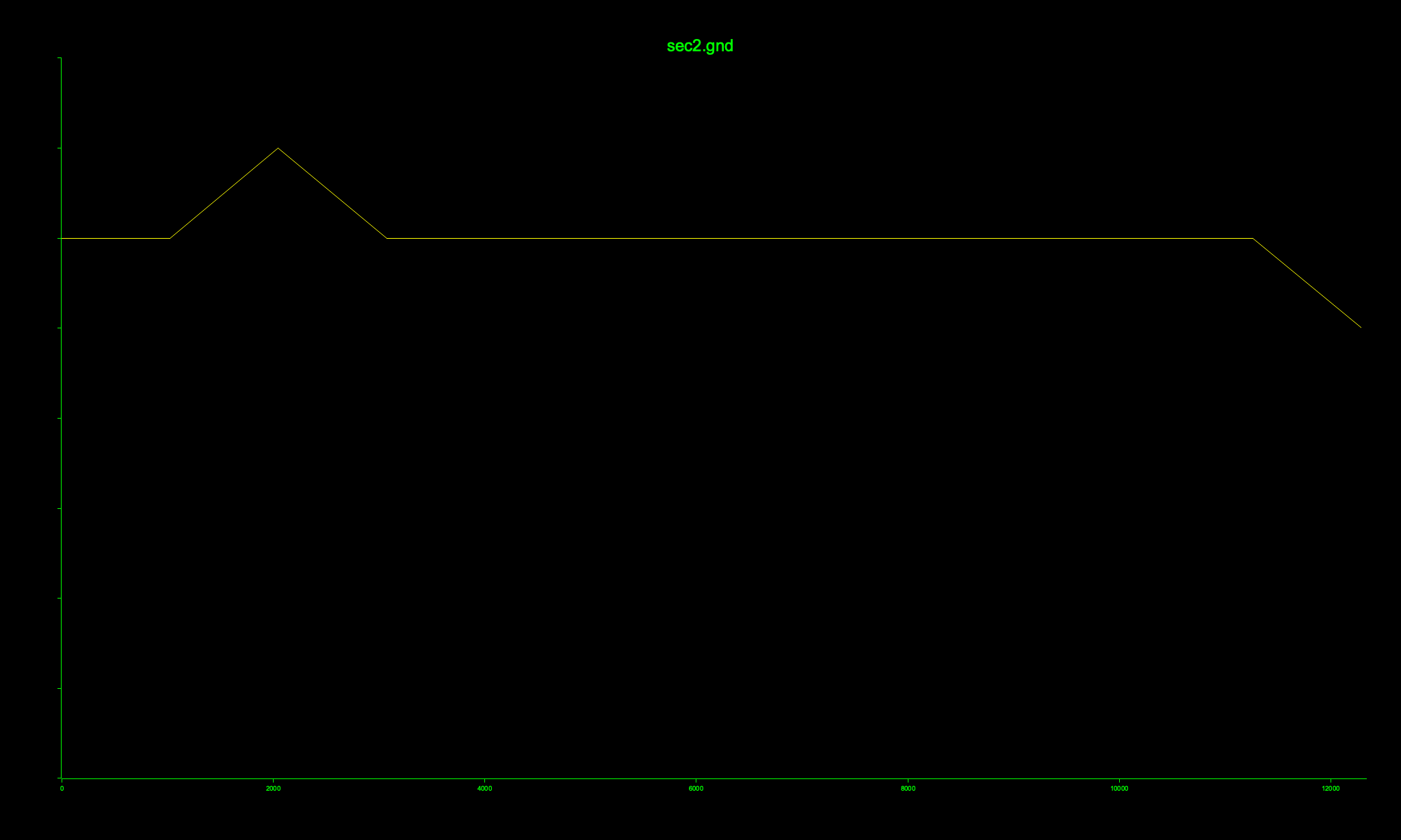
sec2.gnd has high entropy, suggesting compression

sponsors.vga has low entropy, suggesting no compression
Displaying Palette Data
I have a hunch I’ll spend a lot of time examining the raw compressed files alongside their rendered images. The first step is to map each pixel byte (0x00–0xFF) to its corresponding RGB color. Since I’m a visual thinker, it’s most helpful to have a full color matrix at hand. Here’s a small Python script that generates exactly that matrix.
To run it locally:
python3 tools/printPalette.py ../assets/paldata.vga paldata_16.bmp --base 16
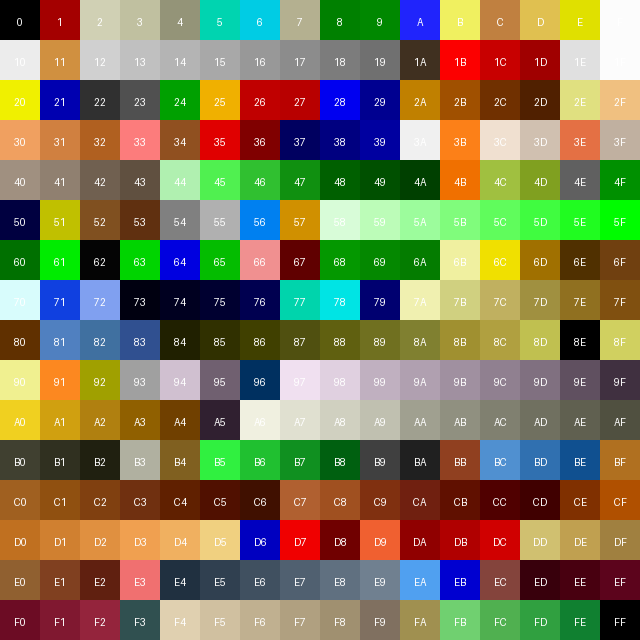
Main game palette colors, extracted from paldata.vga
First Steps
I am still unsure what the format of this compressed file is, but judging from when this game was made (~1992), I strongly suspect the file uses a custom variant of RLE or LZSS. Most likely a combo of both, so I’ll use that as my starting point.
To make my life easier, I’ll focus only on the smallest files that I can reliably read inside the game: fax.gnd, gndcove2.gnd, and sponsor2.gnd.
Using a hex editor (e.g. HexFiend), I compare the first hundred or so bytes of each file, looking for patterns.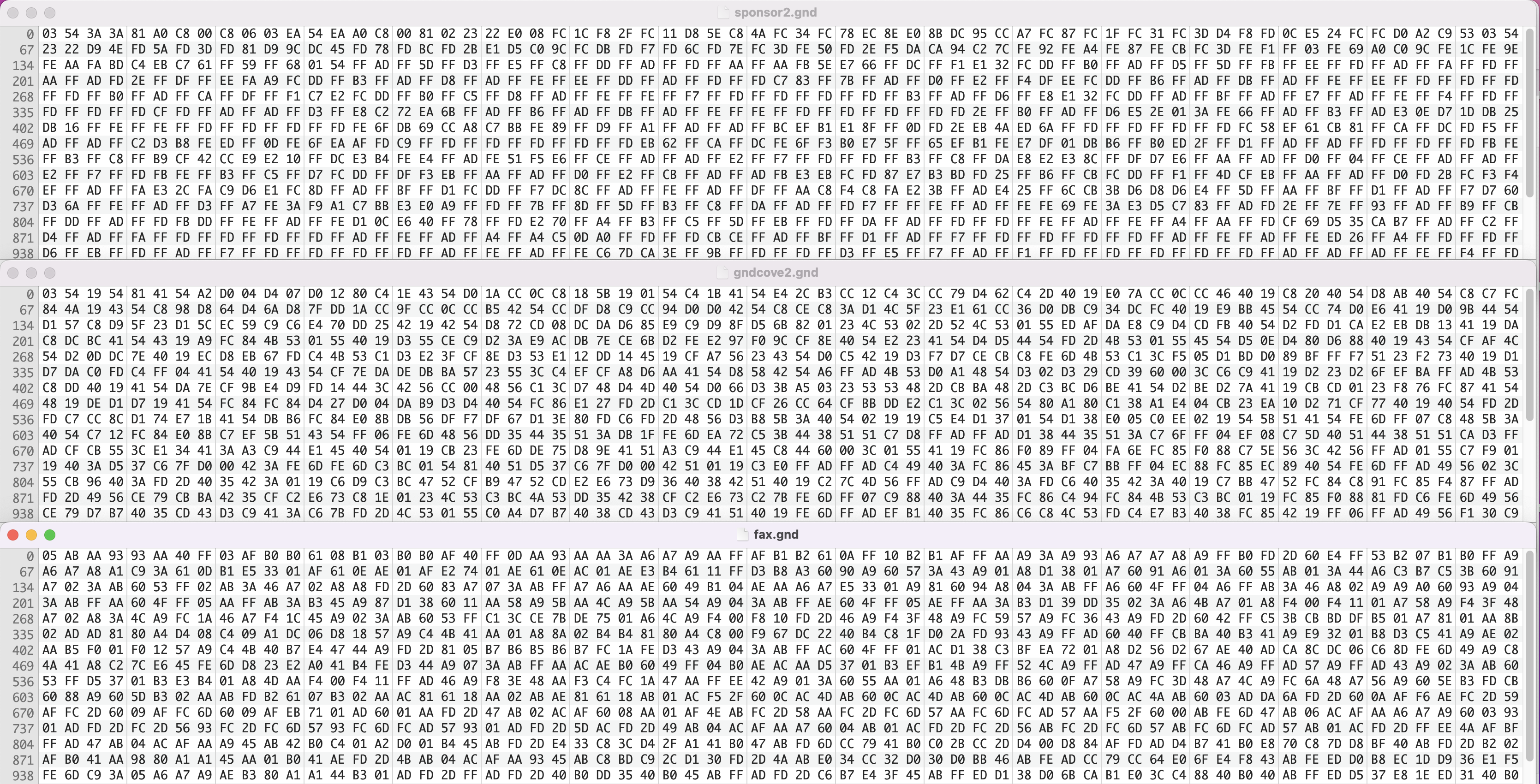
Comparing the first bytes of each file
Normally, LZSS-compressed data begins with header metadata. The first two bytes of both gndcove2.gnd and sponsor2.gnd are identical. I’m not yet sure what they represent, but I suspect they relate to the image size, since both files display at the same dimensions in-game.
Next, I’ll analyze the sponsor2.gnd image. I also assume it renders top-to-bottom. Looking at the pixels, the initial pattern is “GREY WHITE WHITE GREY WHITE WHITE GREY WHITE WHITE.”
Zoomed-in view of the original sponsor2.gnd file.
The first bytes are 0x03 0x54 0x3A 0x3A 0x81. According to the palette matrix above, 0x3A is white and 0x81 is blue. If I change the first 0x3A to 0x35, some white pixels should turn red.
Replacing the first 0x3A with 0x35 in sponsor2.gnd results in the first white pixel (and many downstream pixels) turning red.
After a few more trials, errors, and investigations, here’s what I’ve discovered:
| Byte | Original (HEX) value | Purpose |
|---|---|---|
| 0 | 03 | maybe next 3 bytes are literal |
| 1 | 54 | pixel #1 (grey) |
| 2 | 3A | pixel #2 (white) |
| 3 | 3A | pixel #3 (white) |
| 4 | 81 0A | maybe look back 3, copy 3 |
| 6 | C8 00 | maybe look back 6, copy 6 |
| 8 | C8 06 | maybe look back 12, copy 8 |
| 10 | 03 | maybe next 3 bytes are literal |
| 11 | EA | pixel #21 (blue) |
| 12 | 54 | pixel #22 (grey) |
| 13 | EA | pixel #23 (blue) |
It appears that the first byte specifies how many subsequent bytes are literal values. Bytes 1–3 are literal pixel values, followed by a sequence of back-reference bytes and then more literals. My hypothesis of a custom RLE compression start gaining traction.
Decoding the .gnd Files
After some byte-tweaking I reached four conclusions about the compression format:
- Every byte in the stream is an opcode (command) or its argument.
- The first byte of a file is always an opcode.
- Opcodes may have 0, 1, or 2 argument bytes.
- “Copy” opcodes reference previously decoded bytes (already-drawn pixels); they never look ahead.
My workflow was simple:
- Pick a
.gndfile, spot patterns in the raw bytes vs. on-screen pixels. - Guess the meaning of an opcode.
- Implement that guess in Python.
- Re-decode the image—if something looked wrong I knew either my guess or my code was off.
Below are a few annotated byte traces extracted from the various files I used to get the ball rolling…
Literal & Repeat Samples
mainoff2.gnd
43 3B 01 5F 44 3A 00
-> 5x orange(3B) 1x green(5F) 7x white(3A)
result.gnd
61 1B 35 00
-> row-fill: 319x red(35) (one full 320-pixel row minus the last pixel)
phonpic2.gnd
60 02 35 00
-> 38x red(35)
Small “Copy” Sequences
padpic2.gnd
04 3B 5F 3A 35 00
-> orange, green, white, red
04 3B 5F 3A 35 43 C2 00
-> above + 6x brown(C2)
04 3B 5F 3A 35 43 C2 85 01 C0 00
-> above + red + brown + light-brown(C0)
Long Repeat & Copy Mix
matchpic.gnd
63 AD 35 00
-> about 3.5 rows of red(35)
63 AD 35 02 3A 3A 00
-> above + 2x white(3A)
Experimenting With “Fill” Opcodes
Replacing the entire file with a single opcode trio and you get predictable spans:
40 35 00 -> 3x red
47 35 00 -> 10x red
4E 35 00 -> 17x red
5F 35 00 -> 34x red
60 1C 35 00 -> 64x red
61 1C 35 00 -> 320x red (full row)
Complete .gnd Opcode Reference
| Opcode value(s) | Argument bytes | Mnemonic* | Action (pseudocode) | Typical effect |
|---|---|---|---|---|
00 | — | END | stop() | Terminates the stream |
01–1F | N literals | LIT N | copy(src[pos+1 : pos+1+N]) | Copy the next 1-31 raw bytes |
40–5F | vv | RPT m×vv | m = (opcode & 0x3F) + 3 repeat(vv, m) | Short run-length repeat (3-34 pixels) |
60–7F | xx vv | RPT n×vv | n = ((opcode & 0x1F)<<8) + xx + 36 repeat(vv, n) | Long repeat (≥ 36) |
80–9F | yy | CPY2 off=d | d = yy + 2 copy_back(d, 2) | Copy 2 pixels from up to 257 bytes back |
A0–BF | yy | CPY3 off=d | d = yy + 3 copy_back(d, 3) | Copy 3 pixels from up to 258 bytes back |
C0–FF | yy | CPYk off=d | d = offset + k copy_back(d, k) (The full pseudocode logic is too unwieldy to fit here, see python script for details) | General copy-back (length 4-19, distance ≥ length, max ≈ 1042) |
* Mnemonic legend
- LIT N copy N literal bytes
- RPT m×vv repeat byte
vvm times - CPYk off=d copy k bytes from
dpositions back in the output buffer
The Decoder Script
I wrote a small Python tool,
gndToBmp.py,
that:
- walks the stream opcode-by-opcode,
- shows a live log of each operation,
- writes an updated BMP after every opcode when
--stepis enabled.
Run it like this:
python3 gndToBmp.py ~/dosbox/pm2/gndcove2.gnd \
../assets/paldata.vga \
--scale 5 \
--step
The options mean:
--scale 5– enlarge the output BMP 5×.--step– pause after every opcode, writestep_0001.bmp,step_0002.bmp, … alongside the log.

Bitmap after 276 decoded opcodes

Bitmap after 561 decoded opcodes
Here is the main terminal window showing the decoding for each instruction, where:
LIT N– copy N literal bytes that followRPTm×VV– repeat byte0xVVm timesCPYk off=D– copy k bytes from D positions back in the historyCPY2opcodes live in 80–9FCPY3opcodes live in A0–BFCPY4–CPY19opcodes live in C0–FF
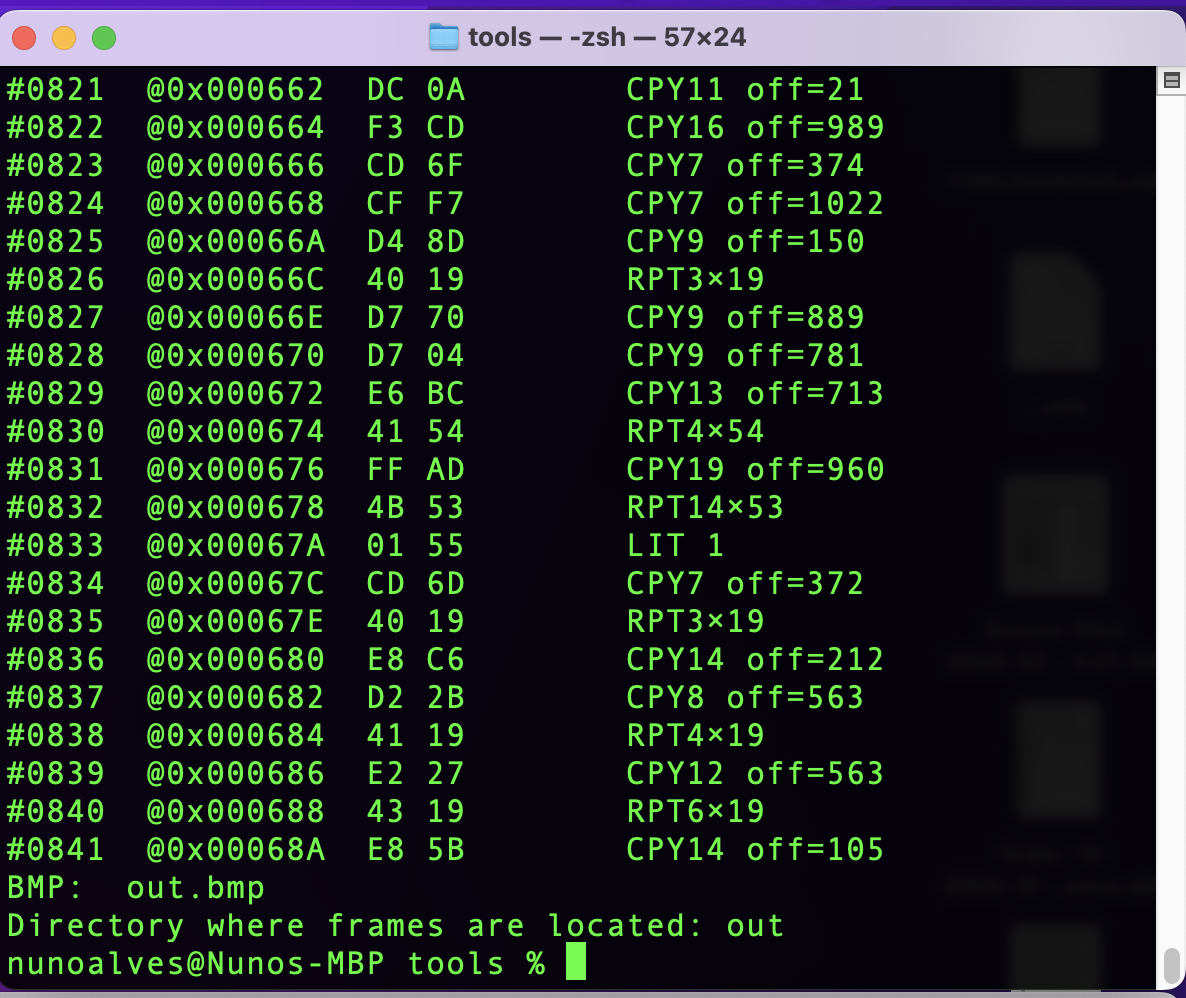
Live trace: frame #, file offset, raw bytes, and decoded meaning
Decoded Images
Running all images through my script is simple. For example:
for inp in ~/dosbox/pm2/*.gnd; do
base=$(basename "$inp")
python3 gndToBmp.py "$inp" ../assets/paldata.vga --scale 5 --out "${base}.bmp"
done
Here are the results of running the decoding tool gndToBmp.py on all the .gnd images. The crashes reported above were indeed due to different image sizes (trying to print more data to the screen than the buffer allowed), not a different compression scheme.

anim.gnd
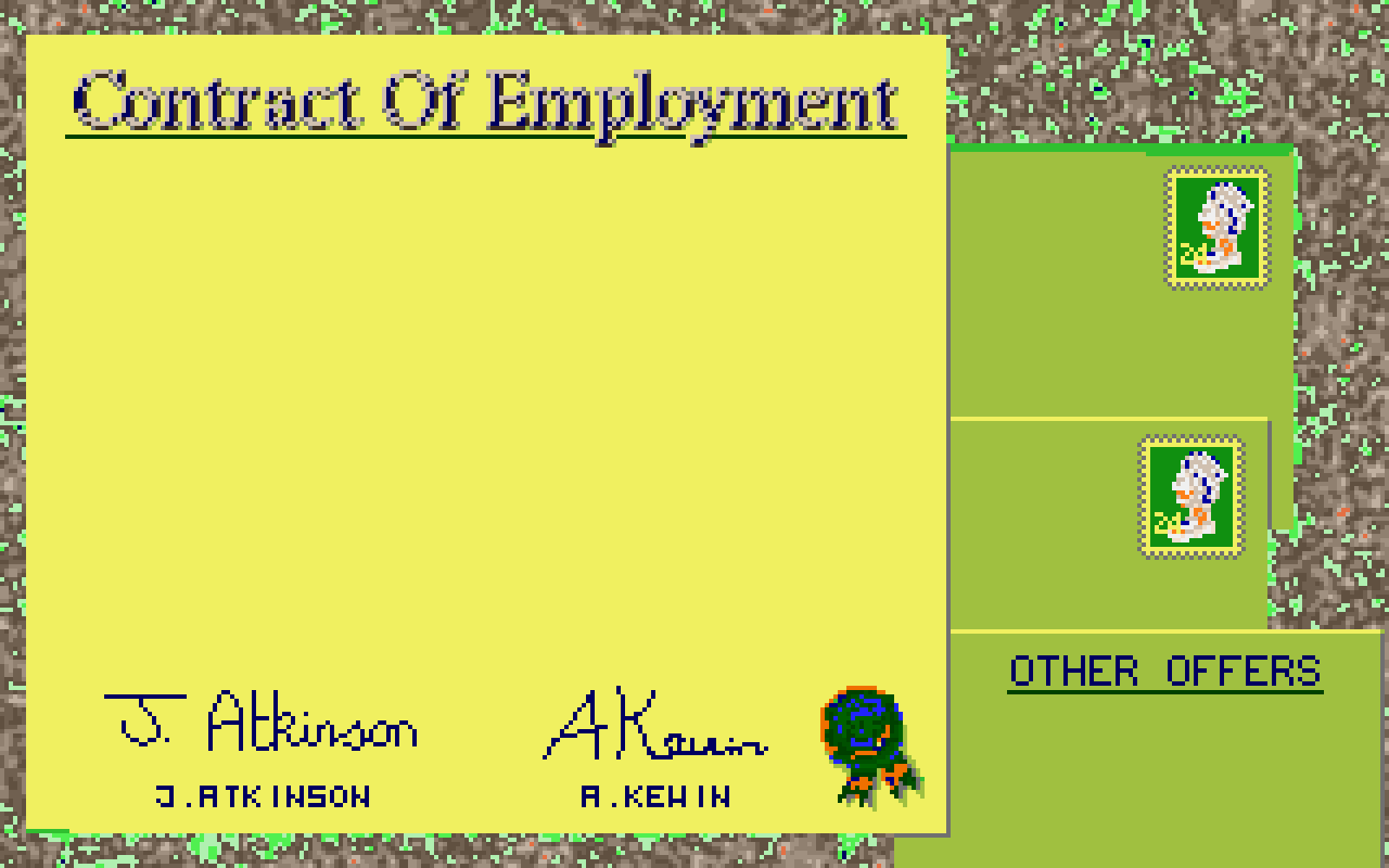
contract.gnd
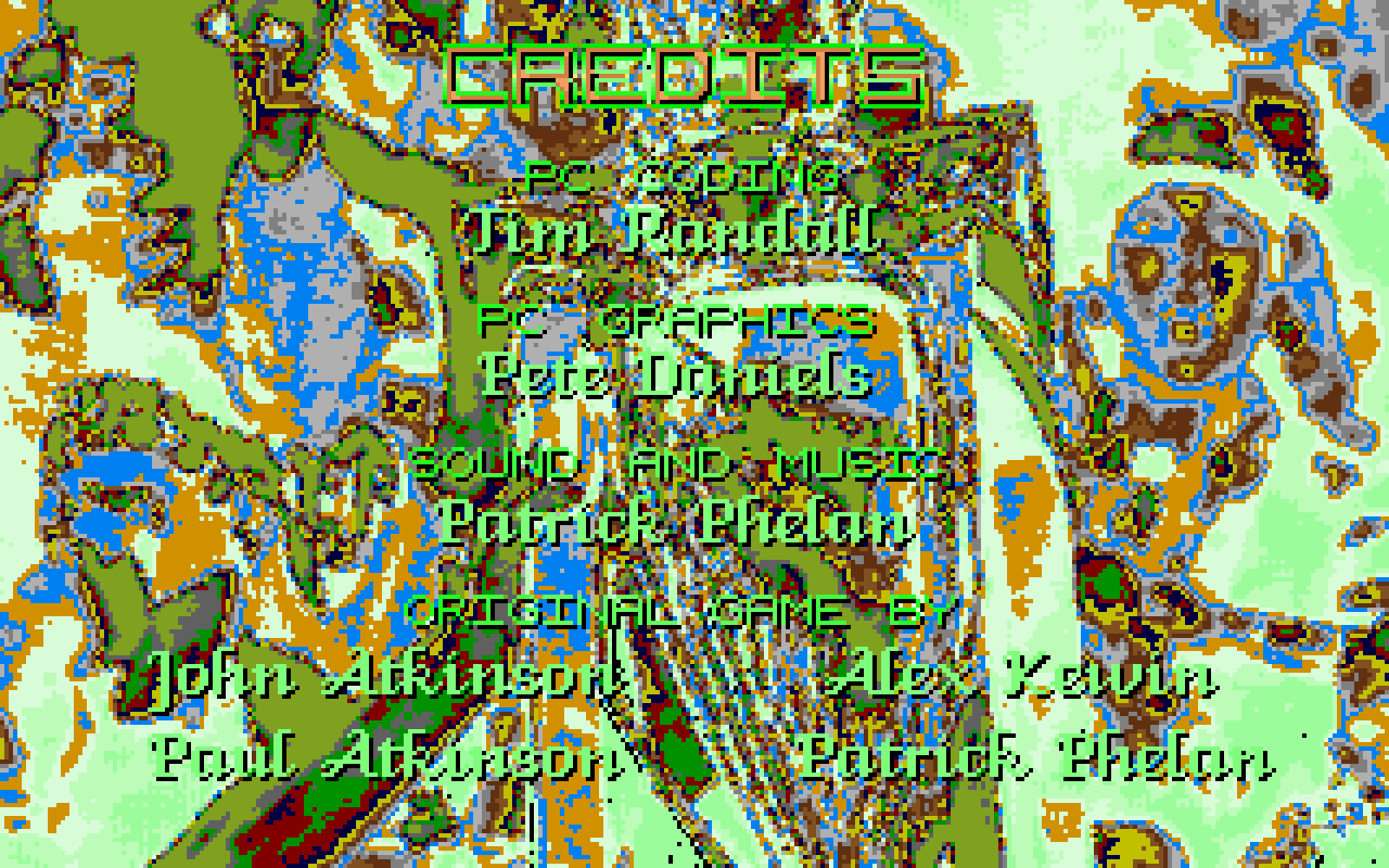
credits.gnd
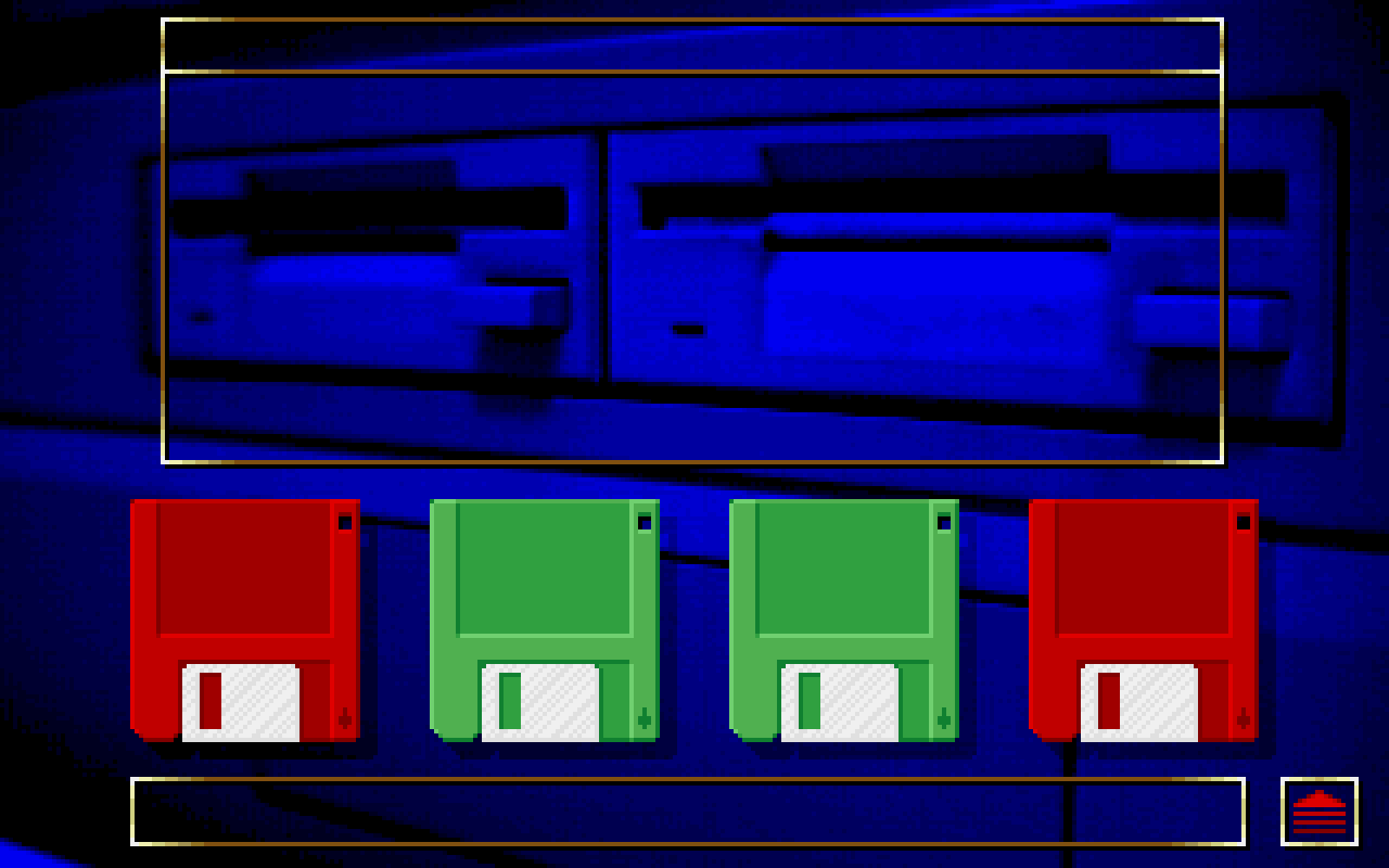
diskpic2.gnd

fax.gnd

gndcove2.gnd

gndgoal2.gnd
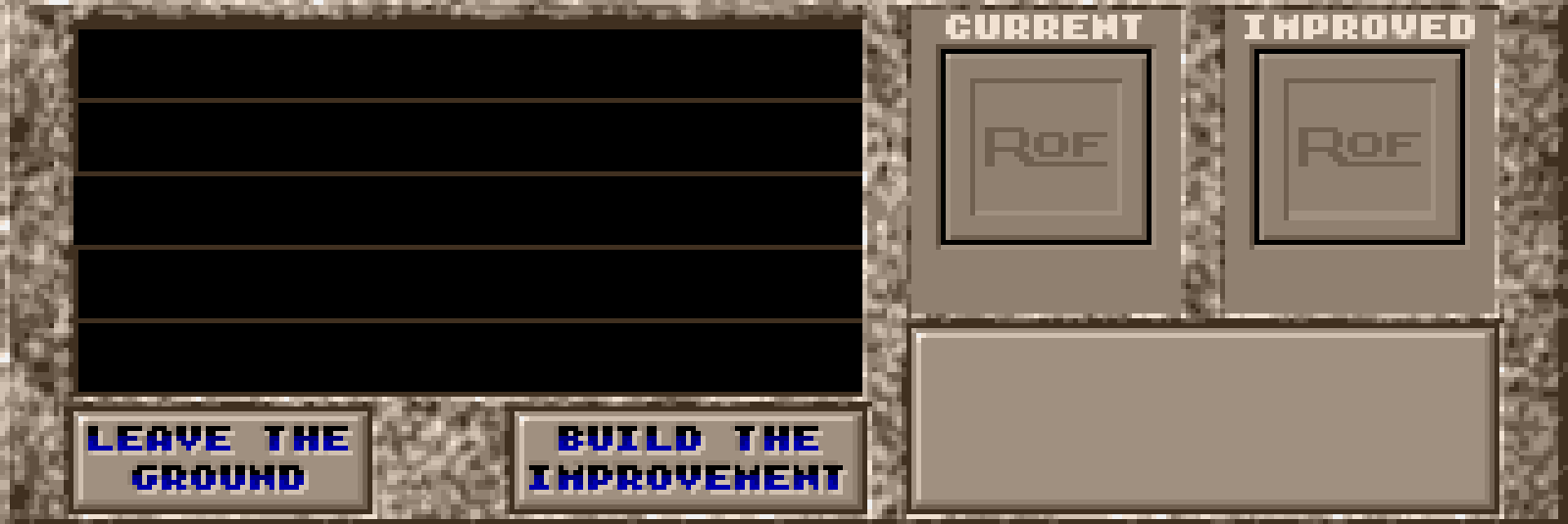
gndpane2.gnd

mainoff2.gnd

matchpic.gnd

monitor.gnd

namespic.gnd
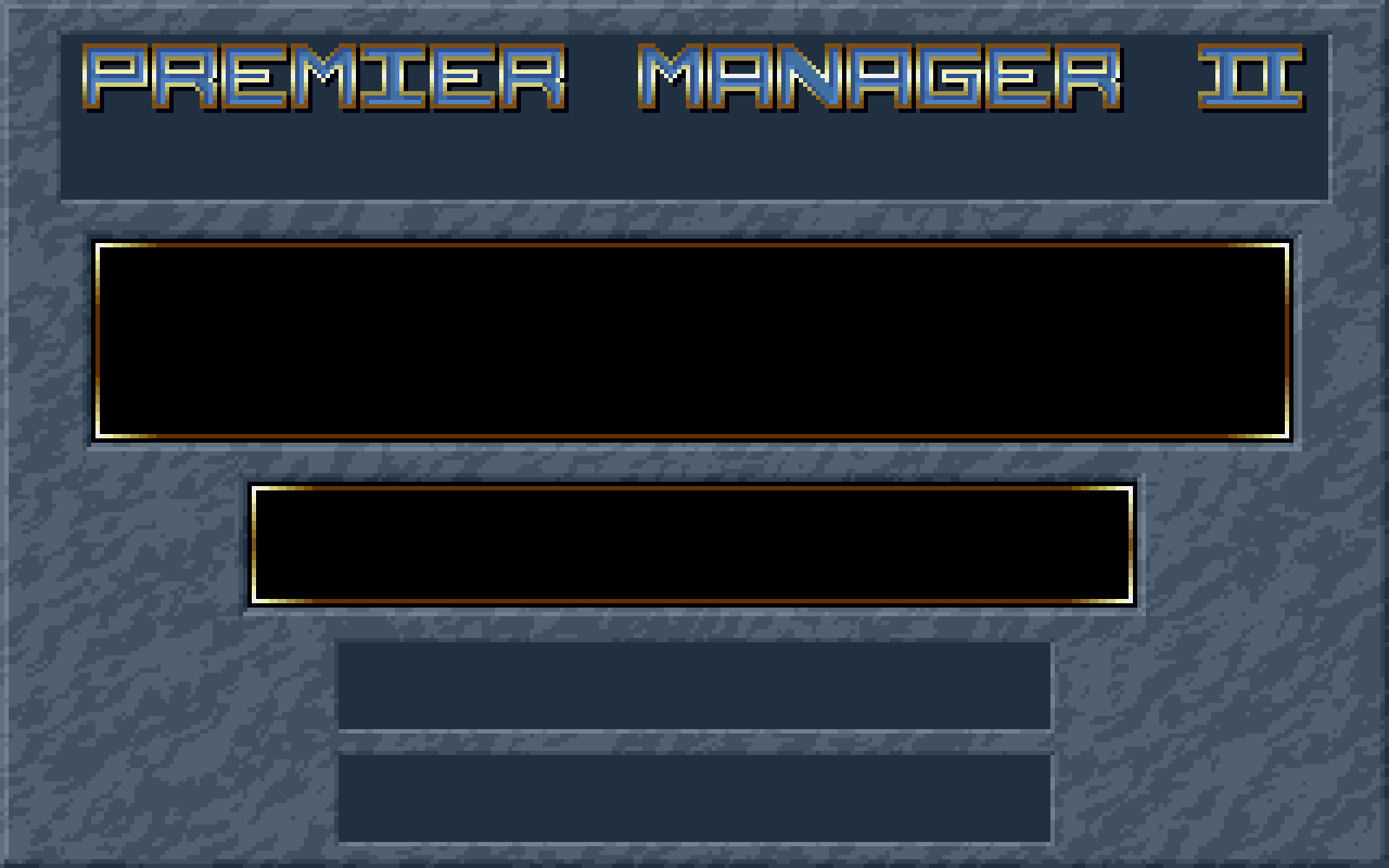
options2.gnd
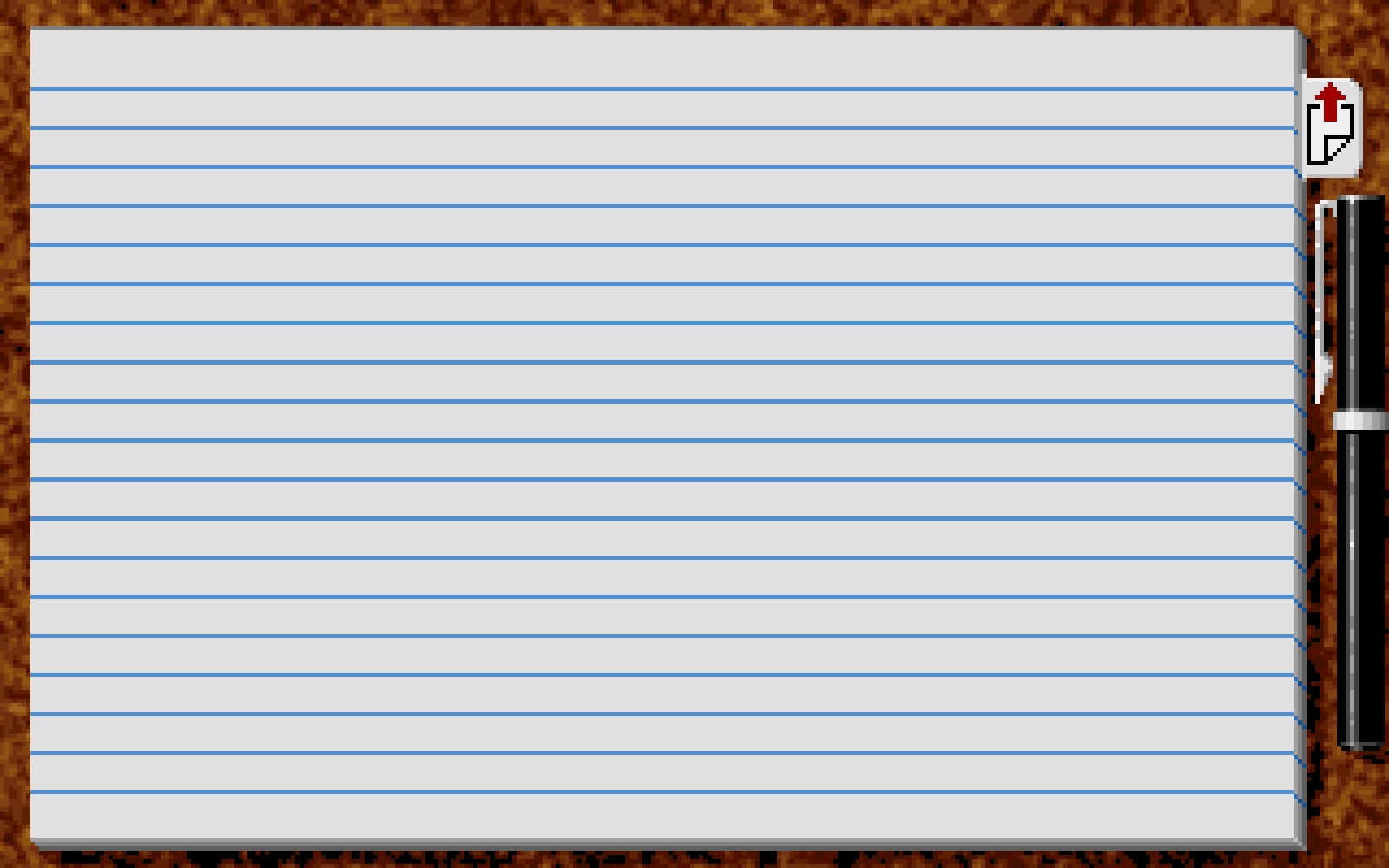
padpic2.gnd
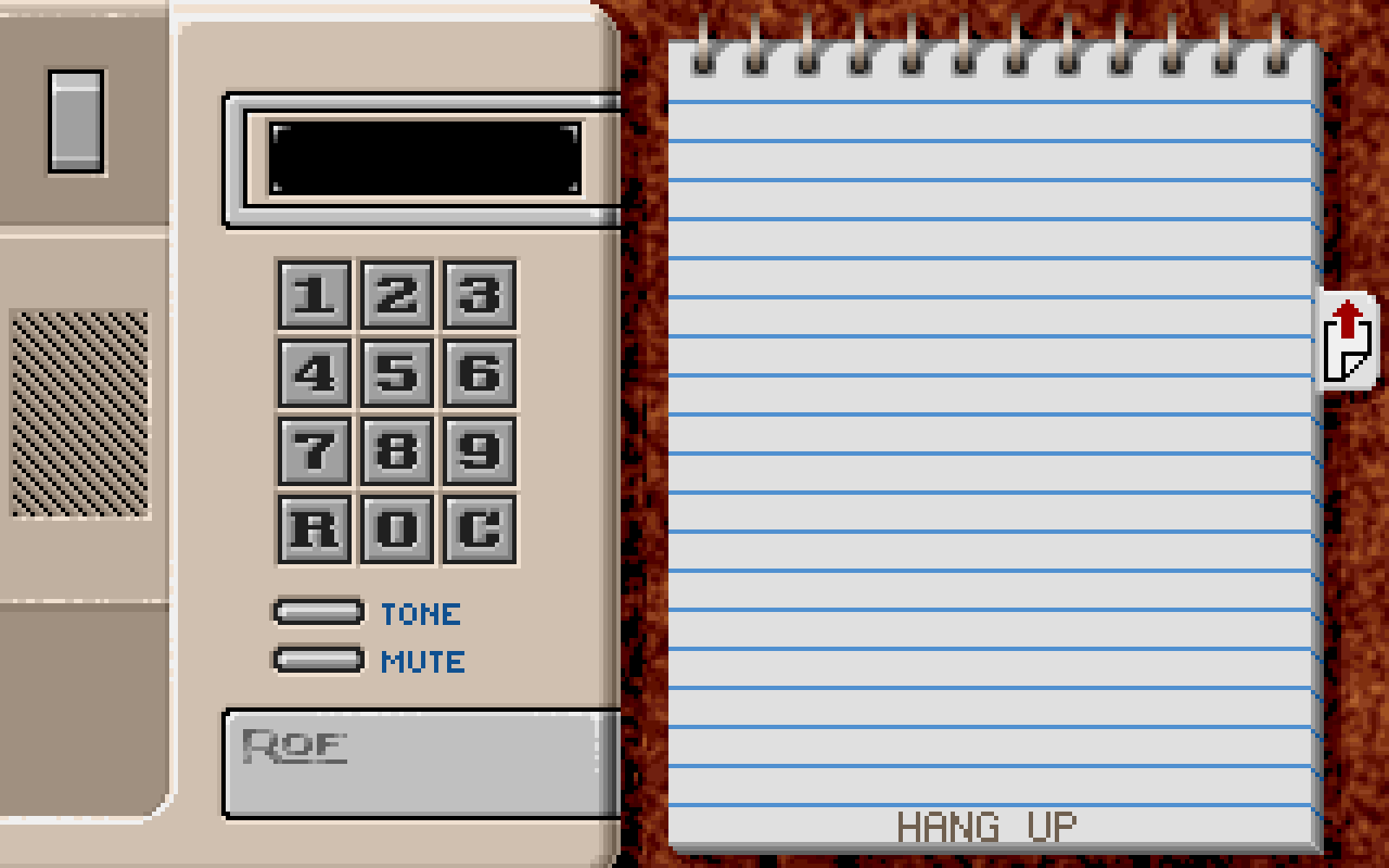
phonpic2.gnd
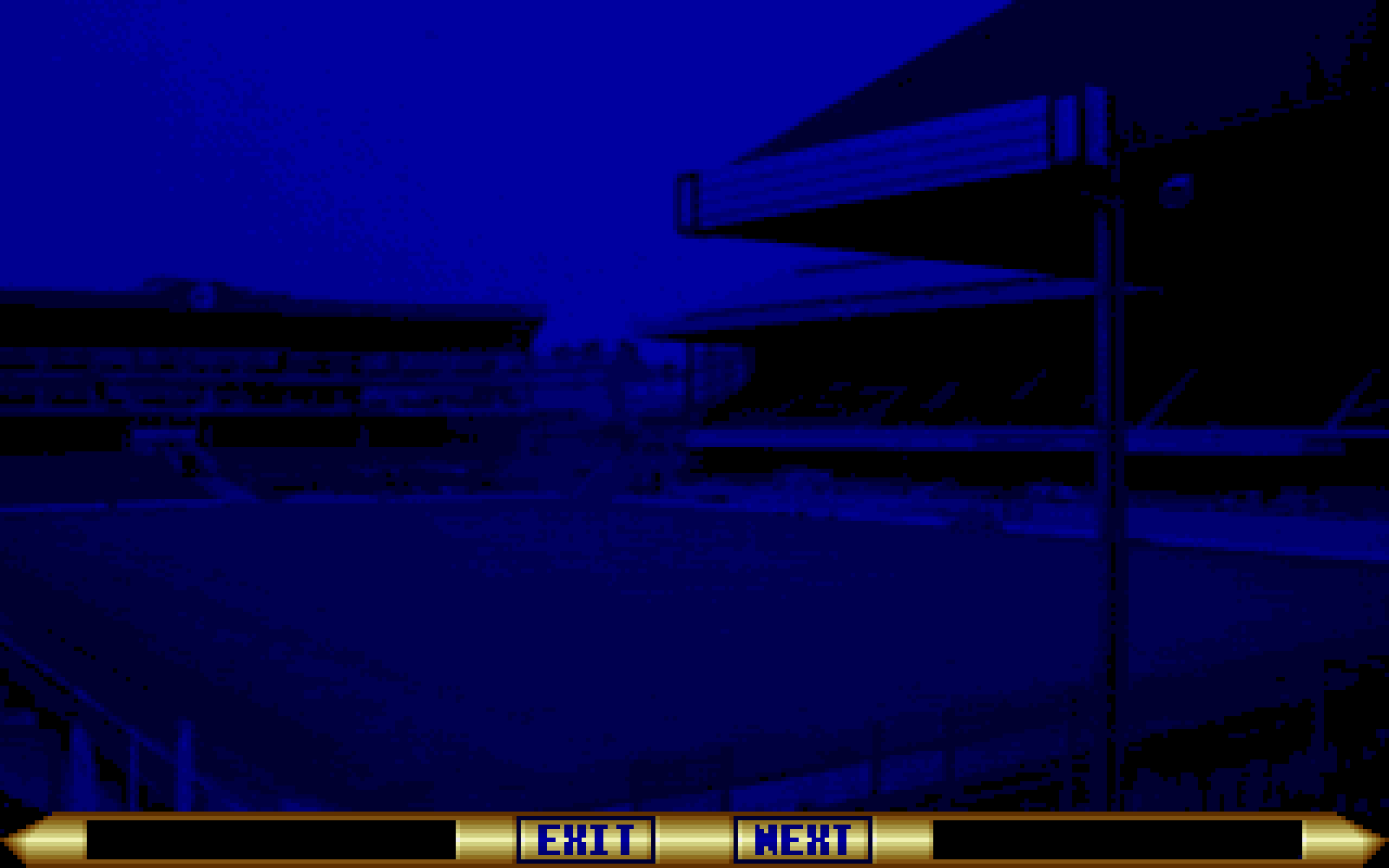
report.gnd

result.gnd
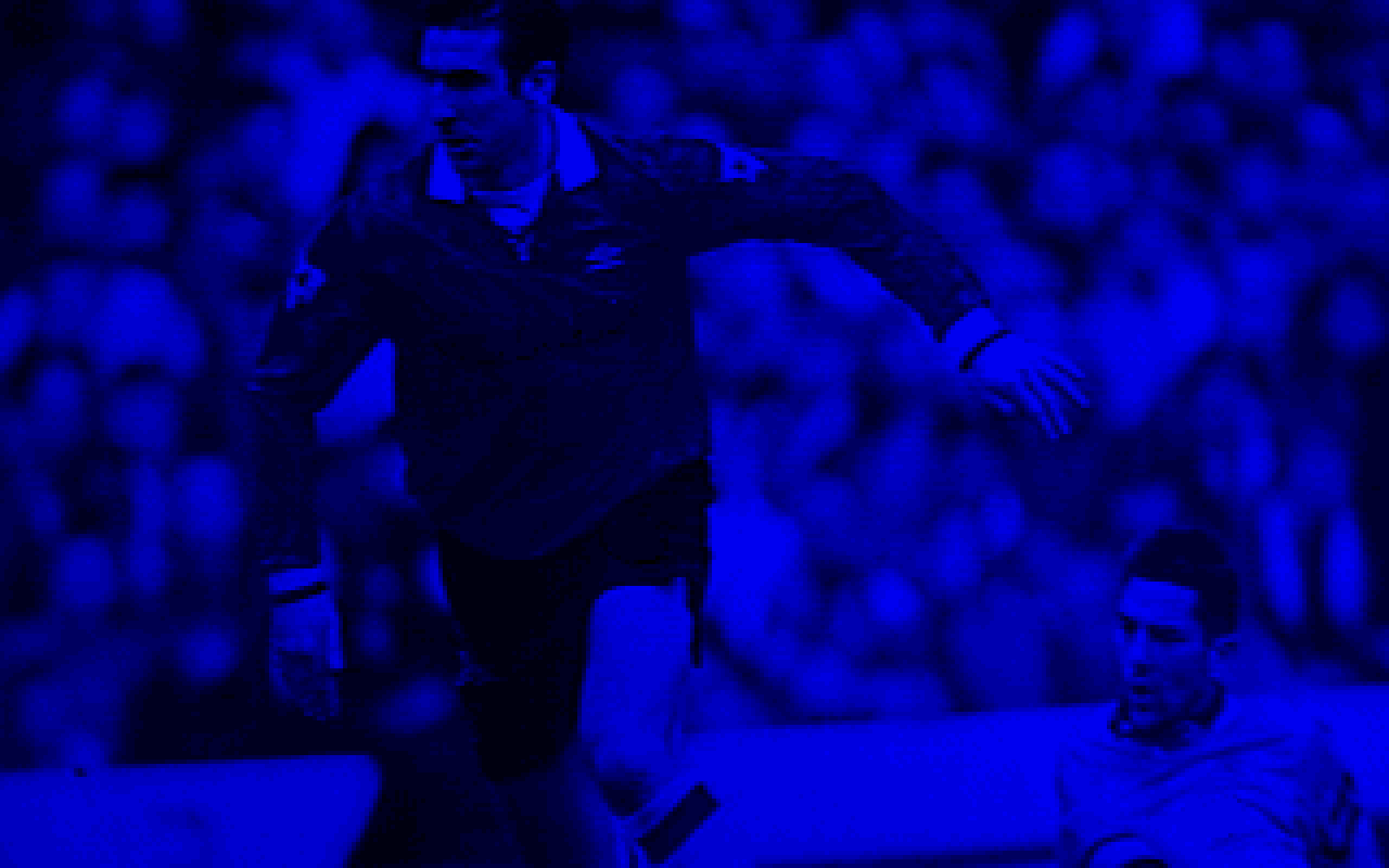
seas1.gnd

seas2.gnd

seas3.gnd
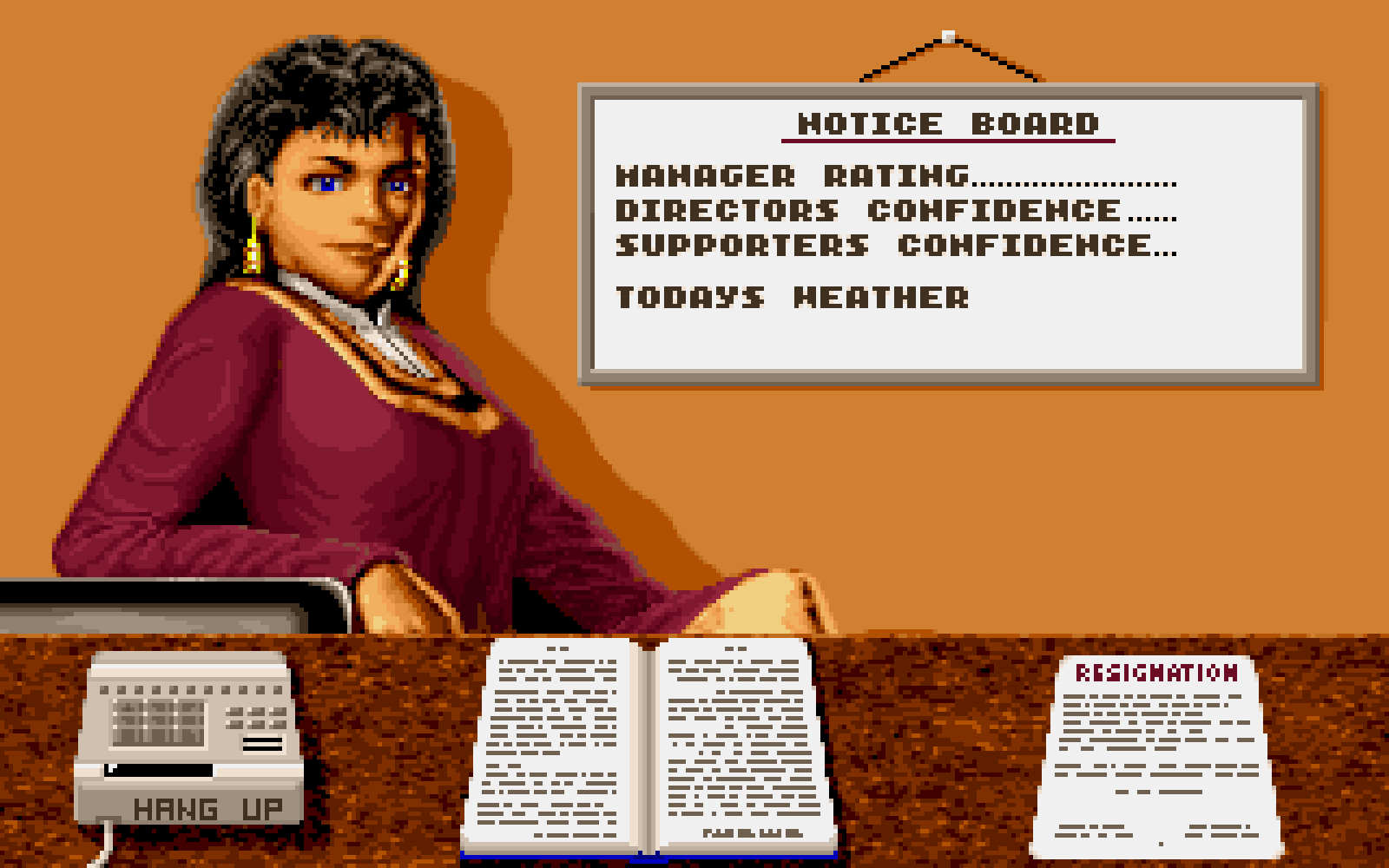
sec2.gnd
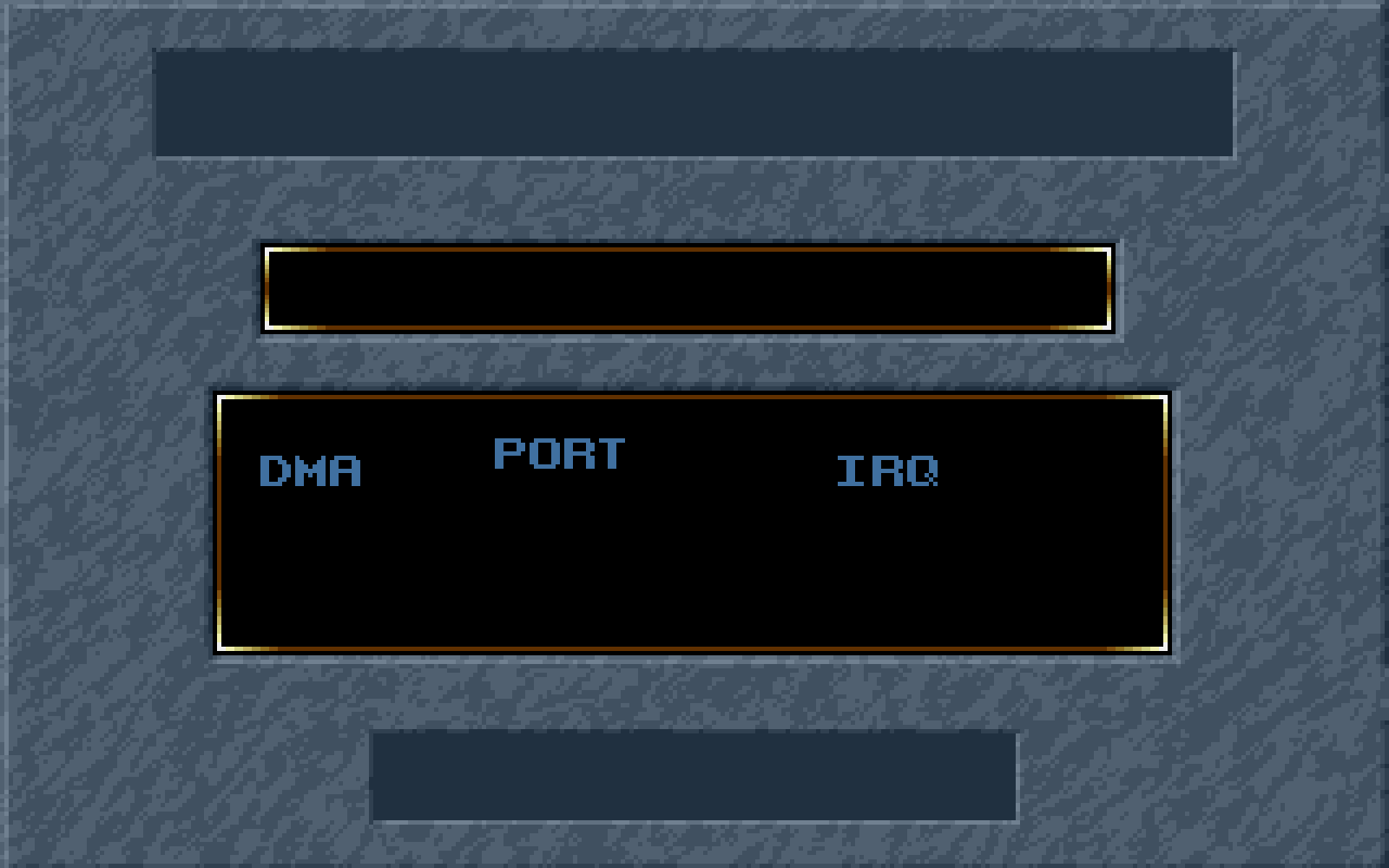
sound.gnd
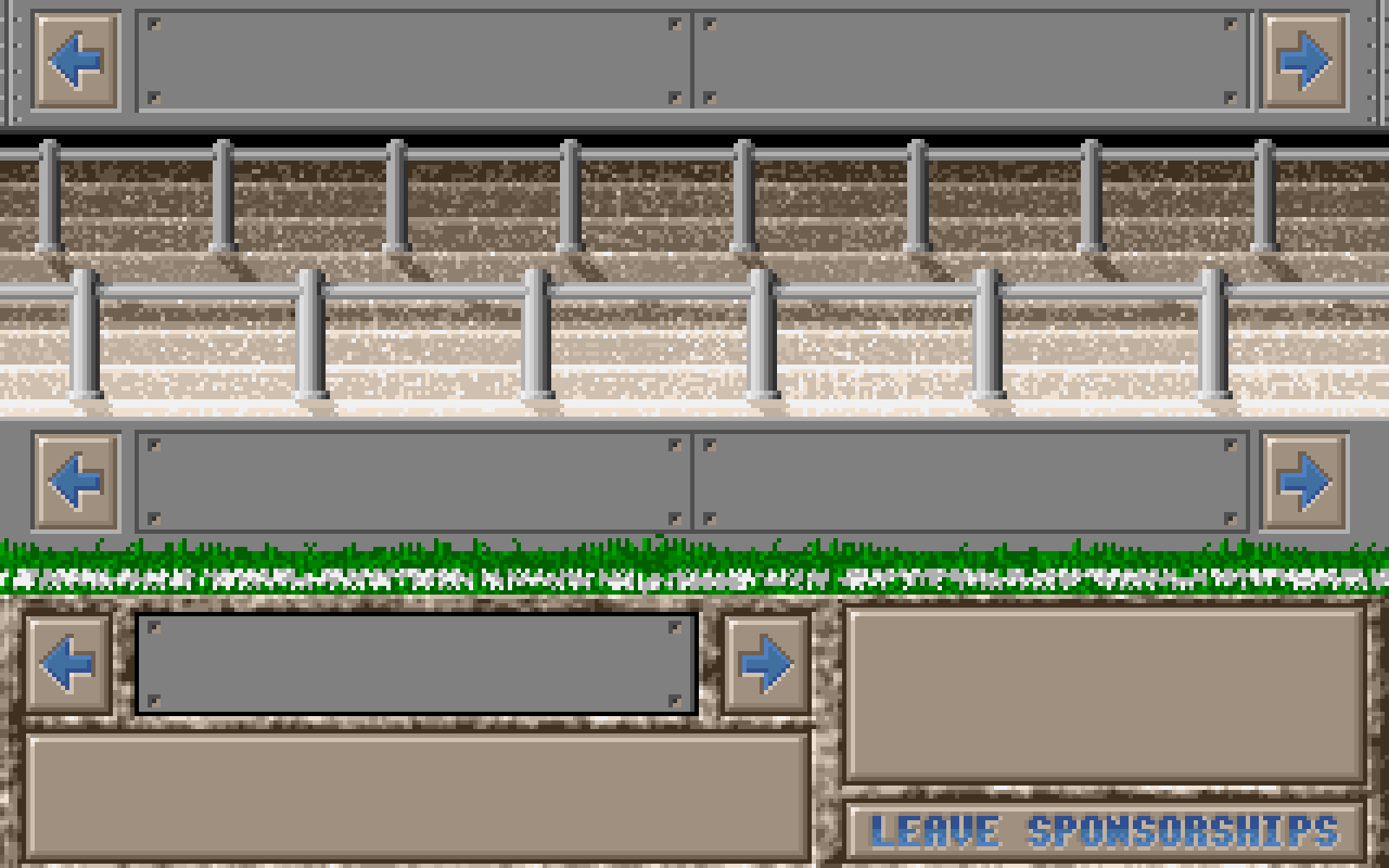
sponsor1.gnd

sponsor2.gnd
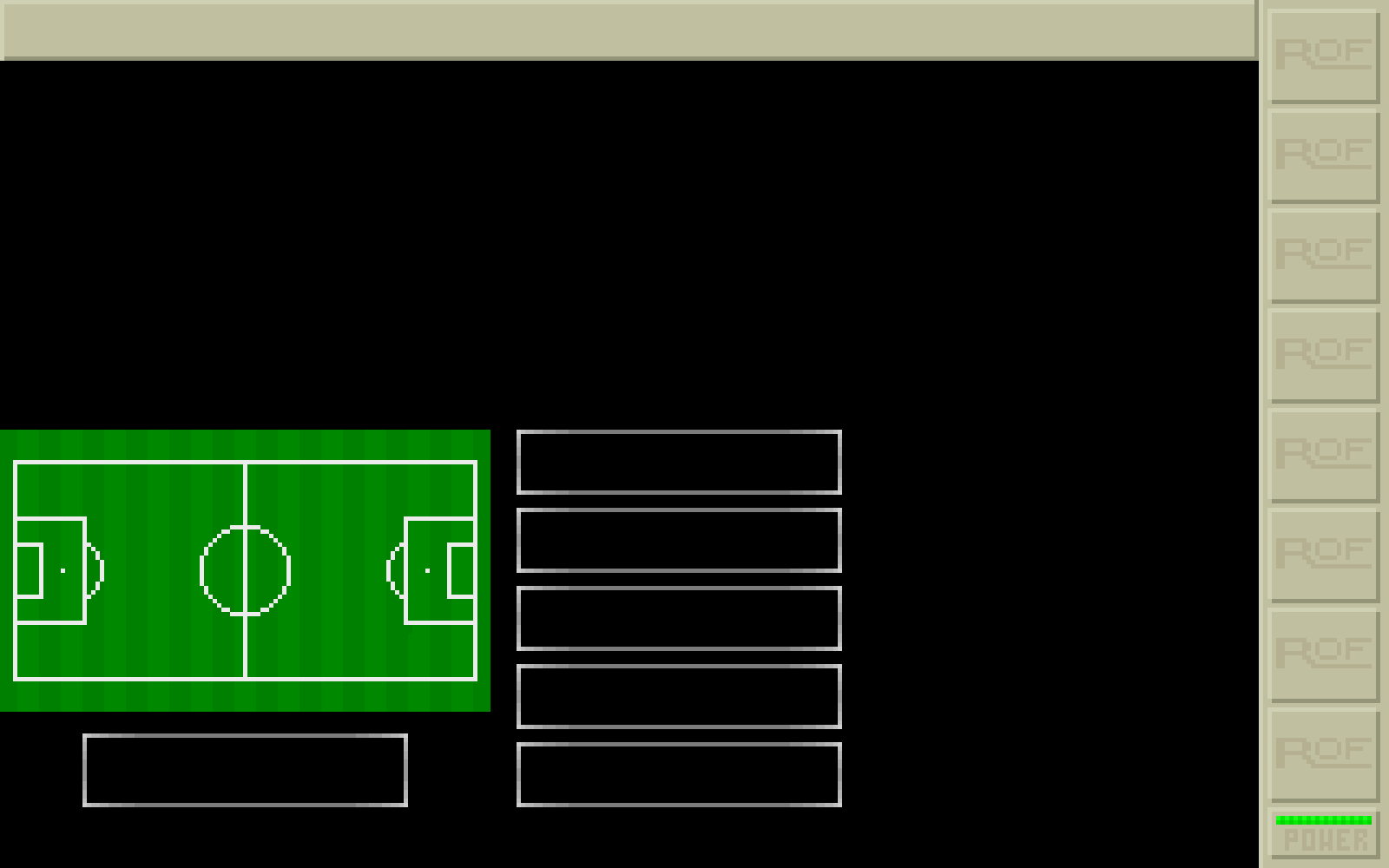
tactic.gnd

titlepic.gnd
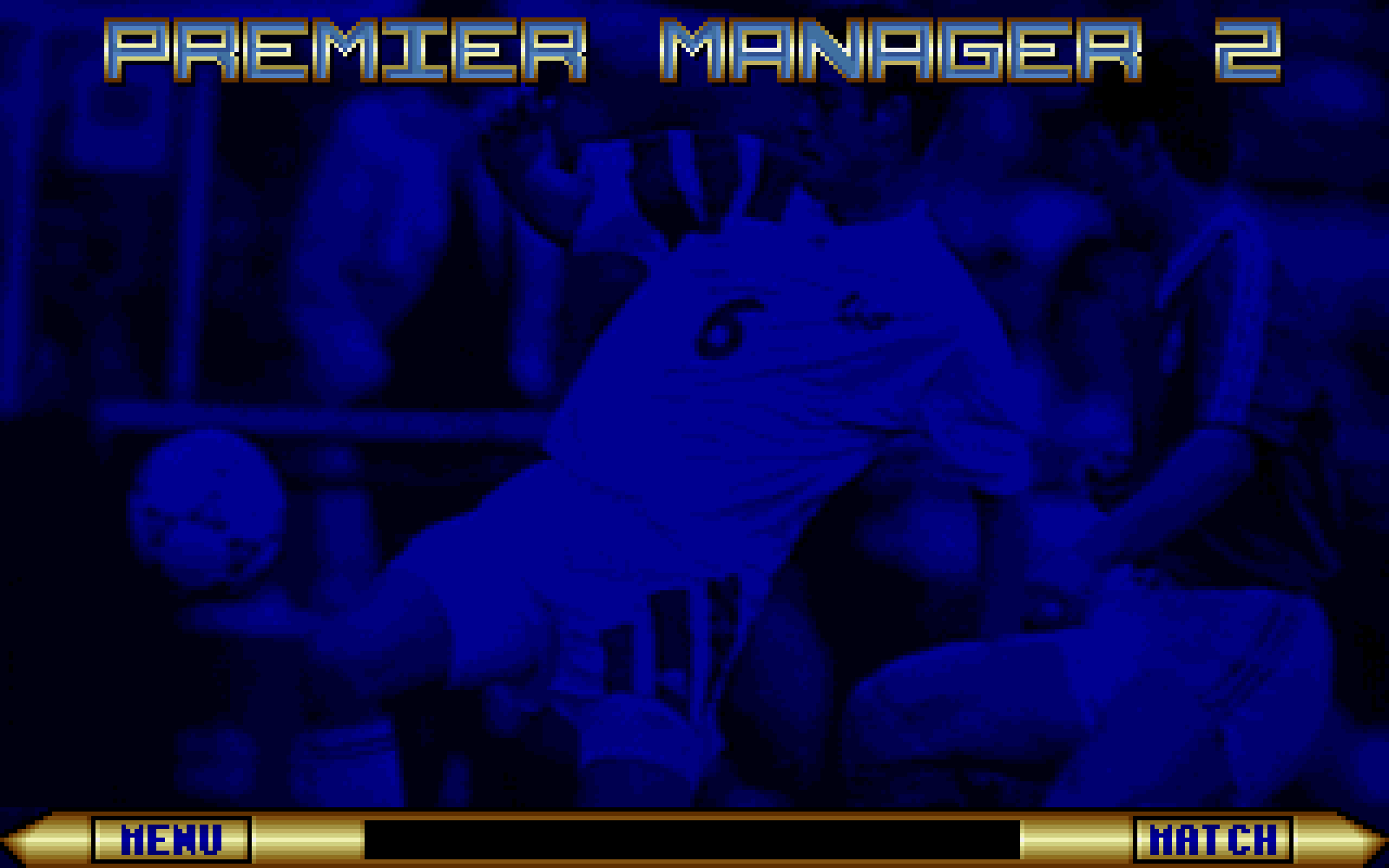
validpi2.gnd
The files credits.gnd, titlepic.gnd, and contract.gnd appear to have been generated with a different palette. Let’s use the other palette file (paltitle.vga) included with the game files:

credits.gnd with correct palette
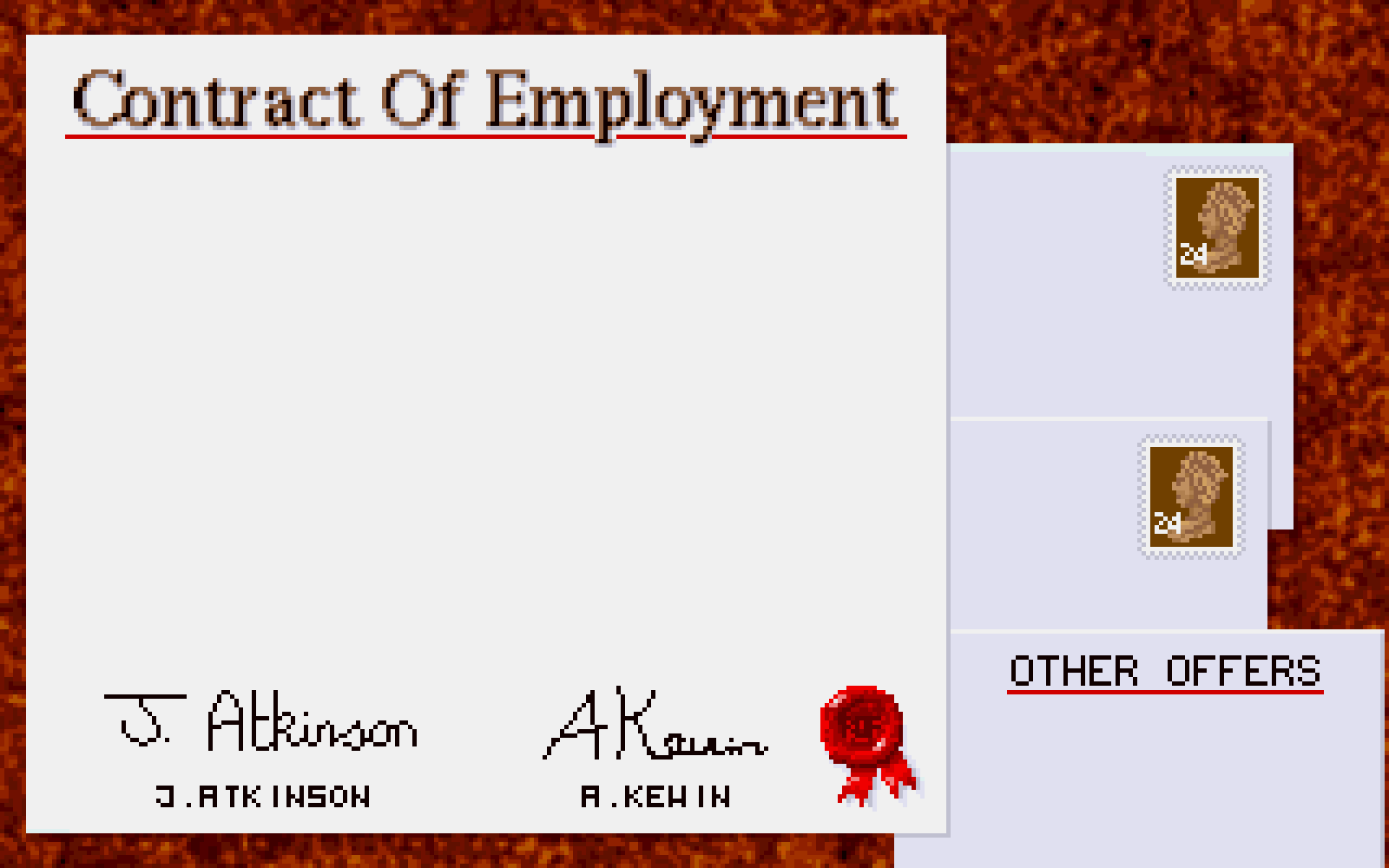
contract.gnd with correct palette
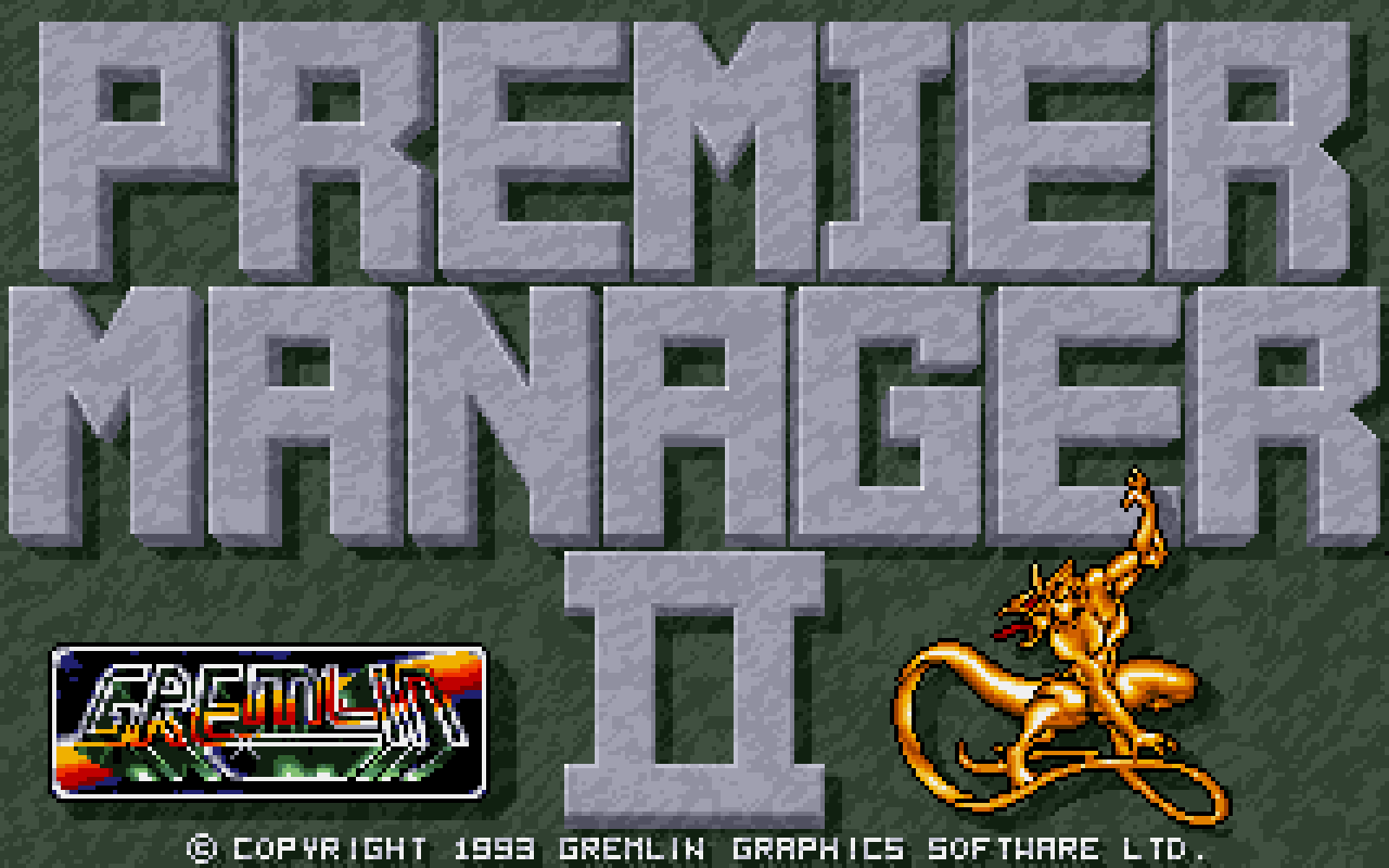
titlepic.gnd with correct palette
Final Thoughts
Figuring out a compression protocol without reverse-engineering the executable was actually a lot more fun than playing the game. The protocol itself feels tacked together. I’m a little confused why they made a custom RLE implementation with strange offsets, rather than using a canned LZSS implementation that’s been around since 1982 (or one of its later variants, like LZW). Anyway, it seems others have done similar things, so it must be okay. Maybe in one of my next posts I’ll compare this with other early-1990s compression schemes—to see what the Premier Manager 2 team were drinking :)
